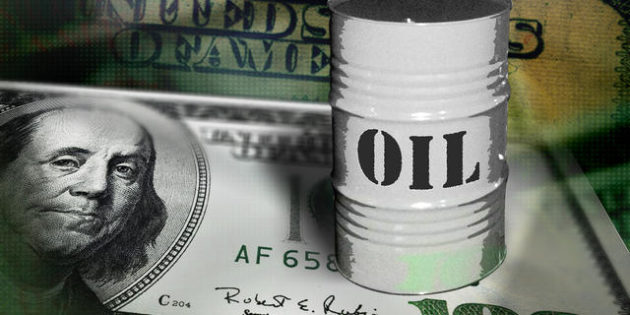EQUITIES
Asia-Pacific stocks largely declined in Thursday trade, as market reacted to overnight U.S. inflation data that remained near the highest level in more than 40 years.
European stocks also are expected to fall sharply at the open later today as global markets digest the latest U.S. inflation reading.
Hong Kong’s Hang Seng index sitting 1.25% lower by the afternoon, while in Japan, the Nikkei 225 fell 1.42%. In South Korea, the KOSPI fell 1.10%. Australian stocks also declined as the S&P/ASX 200 dipped 1.64%.
Mainland Chinese stocks outperformed the broader markets, with the Shanghai Composite up 0.13%.
Overnight on Wall Street, shares dropped following the release of the U.S. CPI data. The tech-heavy Nasdaq Composite lagged as it fell 3.18% to 11,364.24 while the broader S&P 500 shed 1.65% to 3,935.18, its lowest level since March 25, 2021, and 18% below its Jan. 3 record finish. The Dow Jones Industrial Average declined 1.02%, to 31,834.11.
OIL
Oil prices dropped more than 1% on Thursday in a volatile week. Jitters over rising interest rates, the strongest U.S. dollar in two decades, concerns over inflation and possible recession, as well as prolonged COVID-19 lockdowns in world's top crude importer China have impacted the market and put pressure on the oil prices.
Concerns over tight supplies meanwhile persisted as the EU worked on gaining support for an oil embargo against Russia. In its sixth sanction package aimed against Moscow, the EU plans to phase out Russian crude oil within six months and refined products by the end of the year. However, with the vote needs unanimous support, it has been delayed as Hungary and other Eastern European countries, whose economies are largely reliant on Russian oil, opposes the ban because it would be too disruptive to its economy.
Traders also parsed data on U.S. fuel stockpiles. The U.S. EIA reported on Wednesday that the nation's crude inventories increased by 8.5 million barrels during the week ending May 6. Gasoline inventories decreased by 3.6 million barrels last week, while distillate fuel inventories decreased by 0.9 million barrels.
Brent crude futures slipped 1.26%, to $106.15 a barrel. WTI crude futures fell 1.05%, to $104.46 a barrel. Both benchmarks rose 5% on Wednesday, though shed about 9% over the previous two sessions.
CURRENCIES
The U.S. dollar held near a two-decade high on Thursday after U.S. inflation moderated less than markets had expected, keeping the Federal Reserve on course to tighten policy aggressively.
The U.S. dollar index was at 104.100 as it continues to hold above the 103.8 level that it fell below at certain points earlier this week, and close to the 104.19 level reached at the start of the week for the first time since late 2002.
The benchmark 10-year Treasury yield fell overnight and dropped further early on Thursday to 2.895%. The gap between two-year and 10-year yields narrowed, flattening the yield curve.
In cryptocurrencies, the price of bitcoin fell below $28,000, continuing a recent sell-off in the cryptocurrency space against a backdrop of broader risk-off sentiment among investors. It last sat at $27,140, nursing loses from an almost 30% wipe-out that has taken $12,000 off its price in about a week.
GOLD
Gold was lower on Thursday as U.S. dollar stays high. Spot gold slipped 0.23% at $1,848.50 per ounce, and U.S. gold futures was down 0.30% at $1,848.30
U.S. inflation data lifted prices over 1% in the previous session, as traders were cautious about the Fed’s policy stance amid fears of a build-up in underlying inflation pressures.
ECONOMIC OUTLOOK
Stocks fell and the dollar held firm on Thursday as market reacted to overnight data that showed U.S. inflation persistently high, sparked concerns that a path of aggressive rate hiking lies ahead and economic toll of it.
War in Ukraine meanwhile continue to threaten energy crisis in Europe, and lengthening lockdowns in China throw another spanner into supply chain chaos.
Sentiment was mixed as investors picked through U.S. inflation data for clues about the Federal Reserve's rate hiking path. Headline U.S. CPI rose 8.3% in April, was slower than the 8.5% pace of a month earlier and raised hopes that the pace of price rises has peaked. However, it was also higher than market forecasts for 8.1%, and reaffirmed concerns that rates will need to rise quickly to tame it.
The inflation reading comes on the heels of the Fed raising its benchmark overnight interest rate by an aggressive half a percentage point last week — the biggest hike in 22 years — as it moves to unwind ultra-easy pandemic-era monetary policy. Investor concerns about whether the Fed will continue to hike interest rates aggressively have hit growth stocks especially hard.
Investors are anxious to see more data on inflation Thursday when U.S. PPI data is due.














